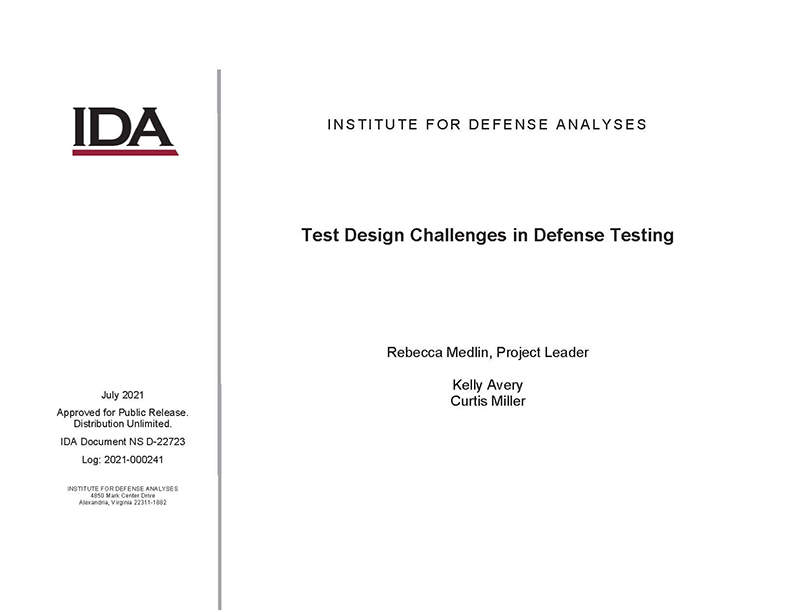Test Design Challenges in Defense Testing
July, 2021
IDA document: D-22723
FFRDC: Systems and Analyses Center
Type: Documents
Division: Operational Evaluation Division
Authors:
IDA document: D-22723
FFRDC: Systems and Analyses Center
Type: Documents
Division: Operational Evaluation Division
Authors:
Authors
Rebecca M. Medlin, Kelly M. Avery, Curtis G. Miller
See more authors

